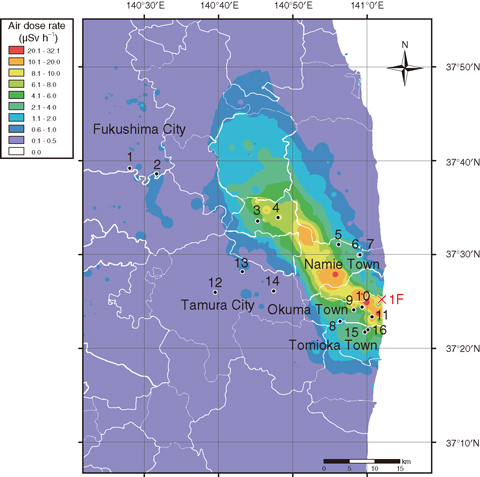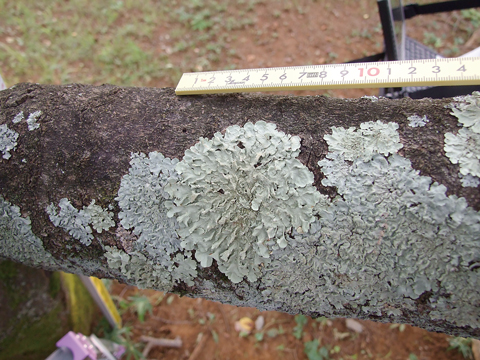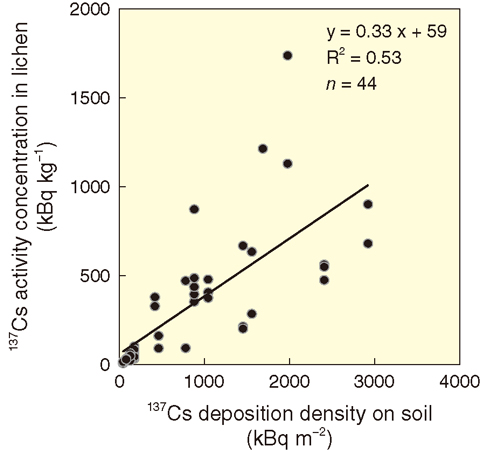
Fig.1-7 Locations of lichen sampling points superimposed on a distribution map of the air dose rate

Fig.1-8 Parmelioid lichens growing on Prunus spp., Japanese cherry

Fig.1-9 The relationship between the 137Cs activity concentration in all 44 lichen samples and the 137Cs deposition density on soil at each sampling point
Lichens are symbiotic organisms consisting of fungi and algae, and they are found in almost all terrestrial habitats, e.g. on rocks, tree bark, and soil. Lichens have been used for understanding and monitoring radioactive fallout contamination in high-latitude regions caused by atmospheric nuclear weapons testing and the Chernobyl Nuclear Power Plant accident of 1986. The merits of lichens for such investigations are especially because of their longevity (more than several decades) and direct absorption of water and airborne through their entire thallus without a root system.
We are working on a research project for estimating the initial fallout amounts of radiocaesium from the accident at the TEPCO’s Fukushima Daiichi NPS (1F) using the radiocaesium activity in lichens as an index value. For the application of a lichen species as an indicator, the following conditions are necessary: ① it has a wide distribution in the study area; ② it shows significant positive correlation between radiocaesium activity concentration in lichens and fallout amounts; and ③ it grows stably enough for long-term monitoring. We have conducted field investigations at 16 points within a radius of 60 km from the 1F since December 2012 (Fig.1-7). We focused on parmeliod lichens which commonly grow on the trunks of Prunus spp. (Japanese Cherry trees) planted on public places, e.g., parks, schools, and river banks (Fig.1-8). The activity concentrations of 134Cs and 137Cs in lichen samples were measured by γ-ray spectrometry using a CsI scintillation detector coupled to a multichannel analyzer. The relationship between radiocaesium activity concentration in lichen samples and the 137Cs deposition density on soil was examined. The 137Cs inventory in soil at each sampling point was estimated based on data collected by the Ministry of Education, Culture, Sports, Science and Technology (MEXT) three months after the 1F accident.
The relationship between the activity concentration of 137Cs in nine species of parmelioid lichens collected two years after the accident and the 137Cs inventory in soil shows a significant positive correlation (Fig.1-9). This result suggests the possibility that lichens could hold radiocaesium on their thalli for at least two years after the accident. We are focusing on especially Flavoparmelia caperata and Parmotrema clavuliferum, which are dominant in the study area and show good correlations with radiocaesium inventory in soil. Further research on the half-life of radiocaesium would contribute to improving our estimation of initial fallout amount.
The present study was accomplished in collaboration with the National Museum of Nature and Science.